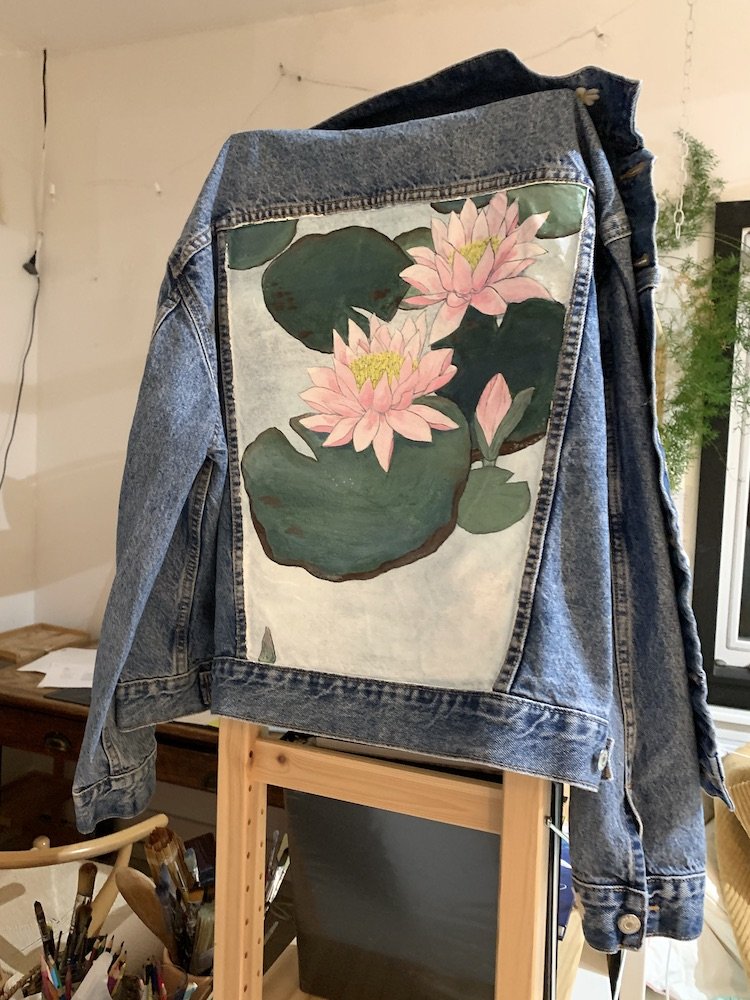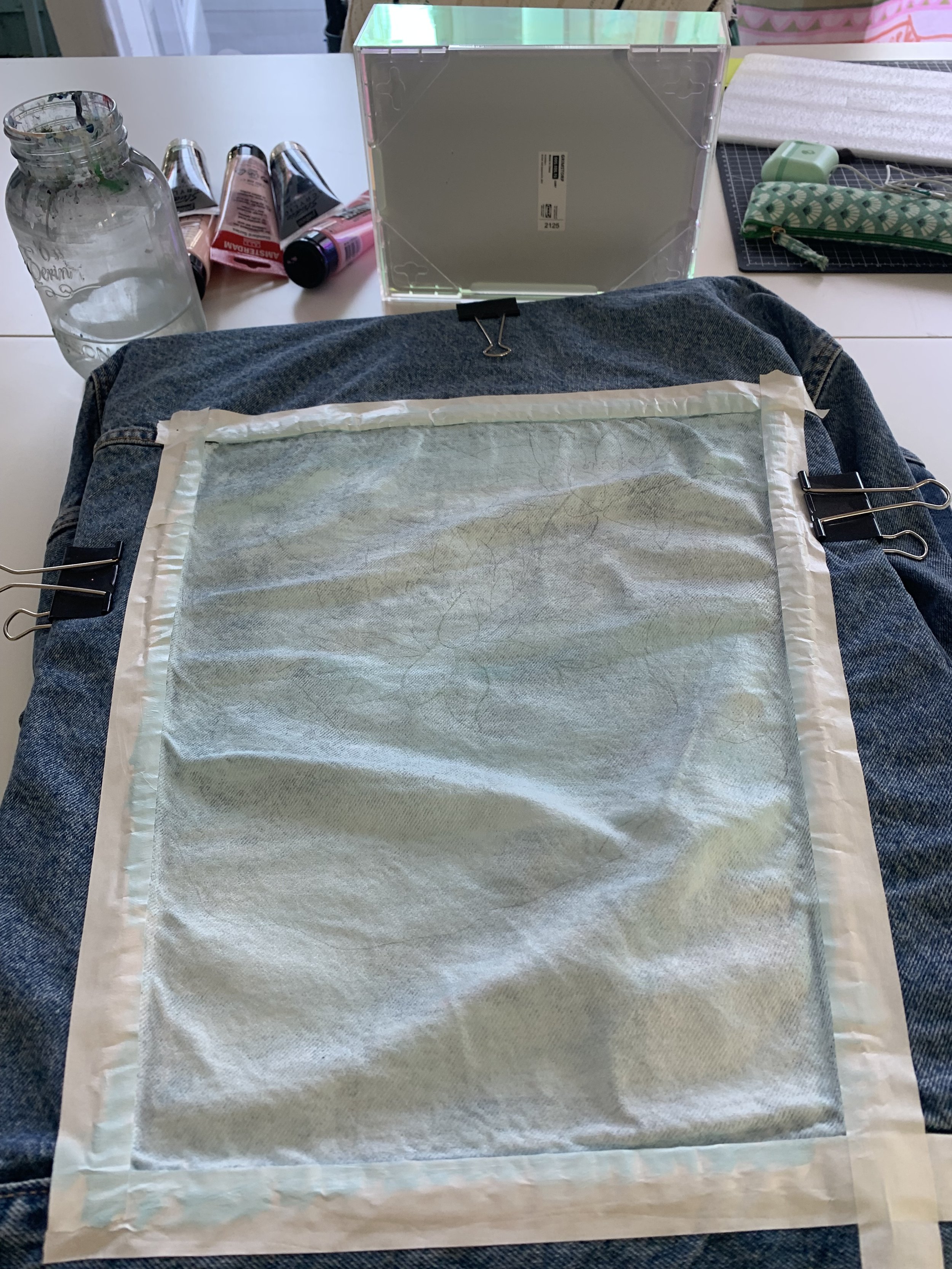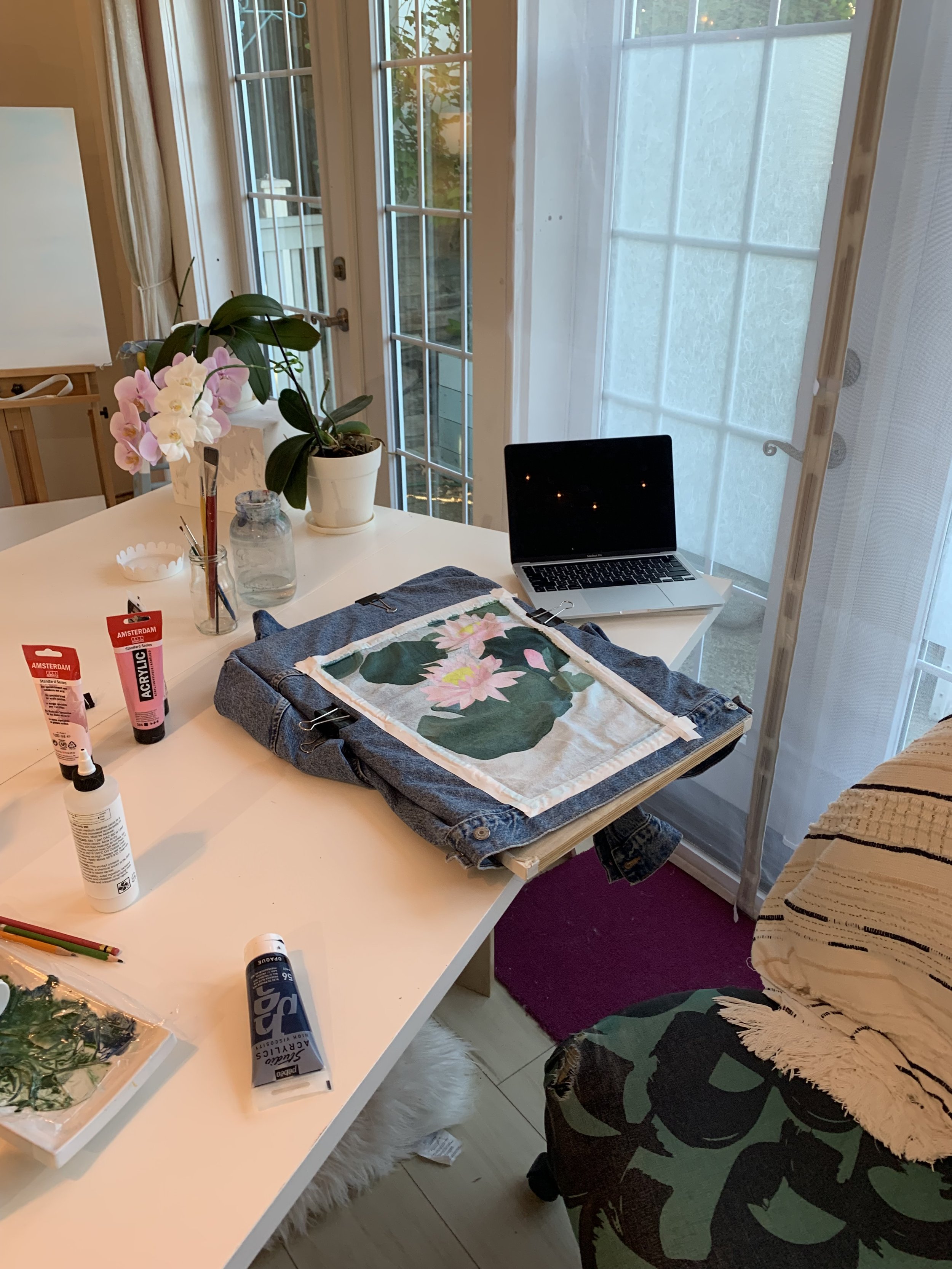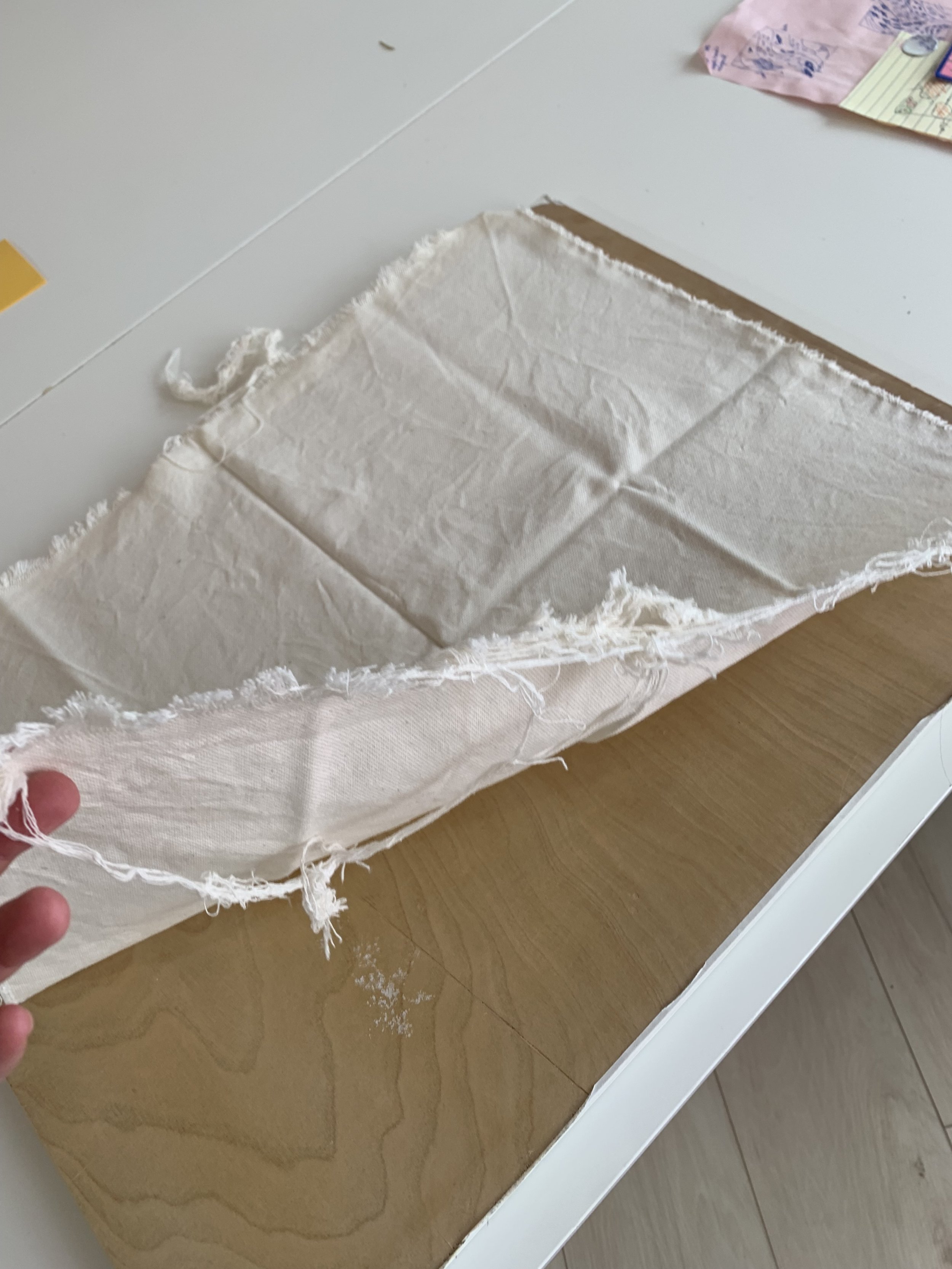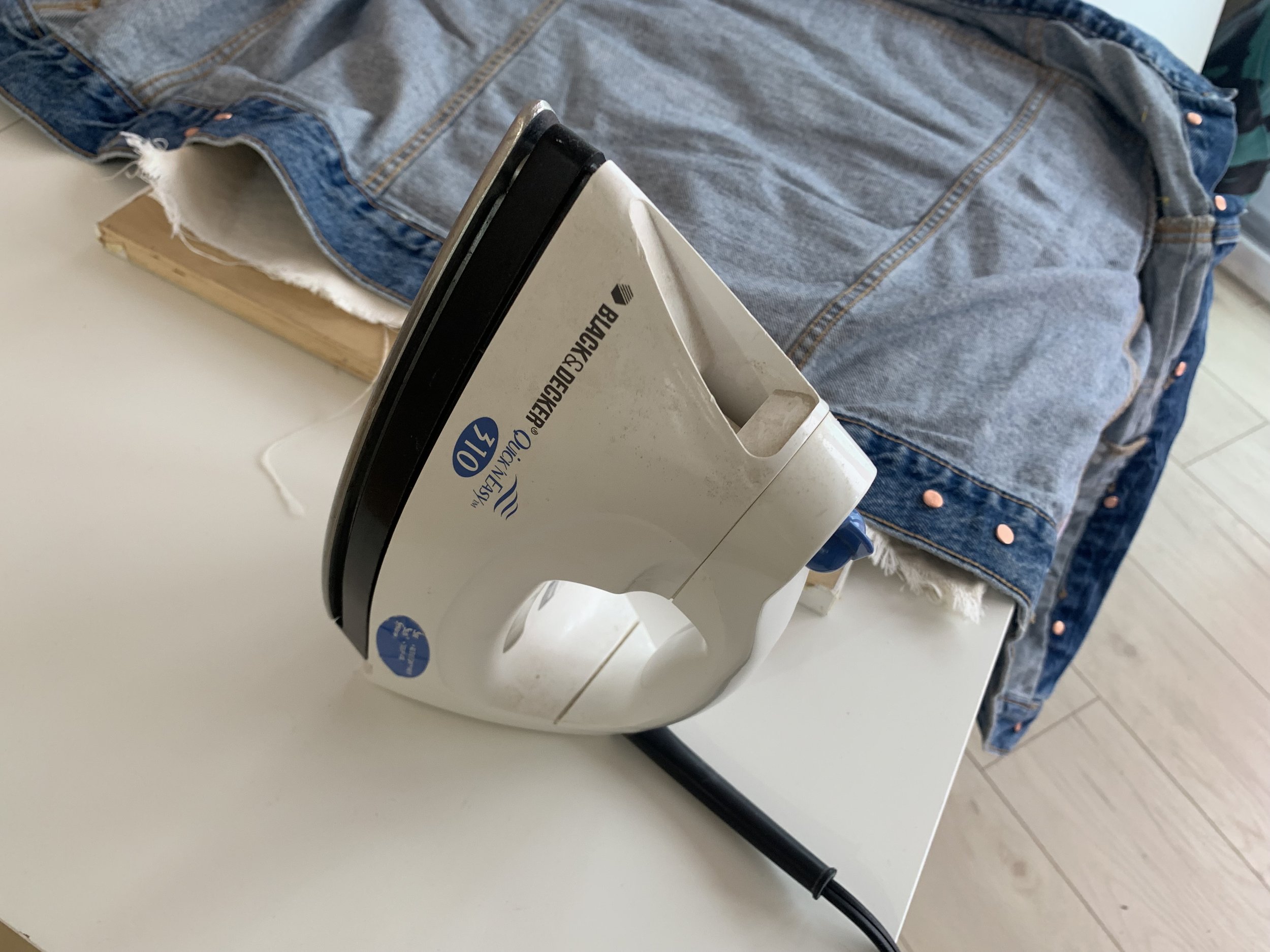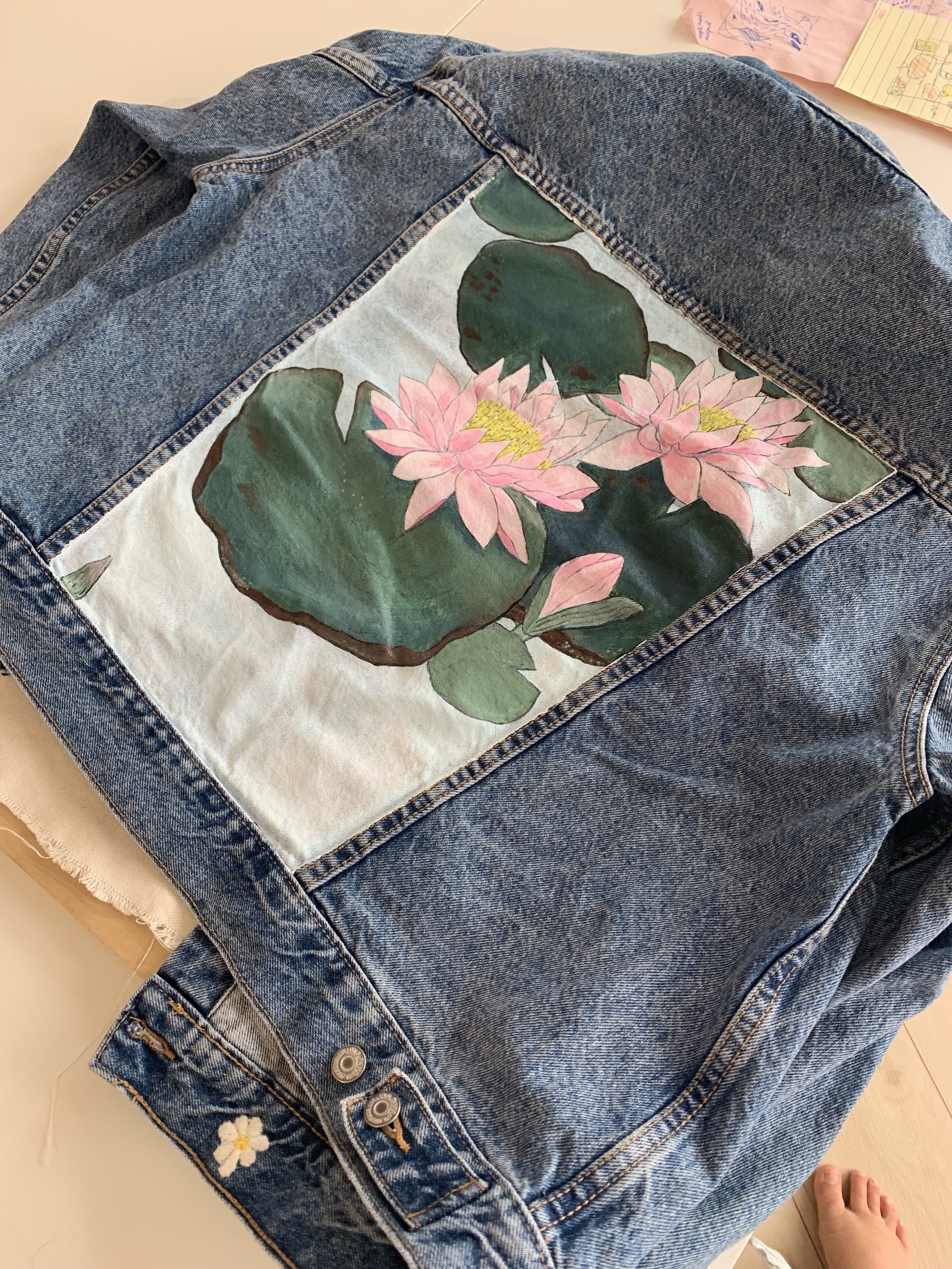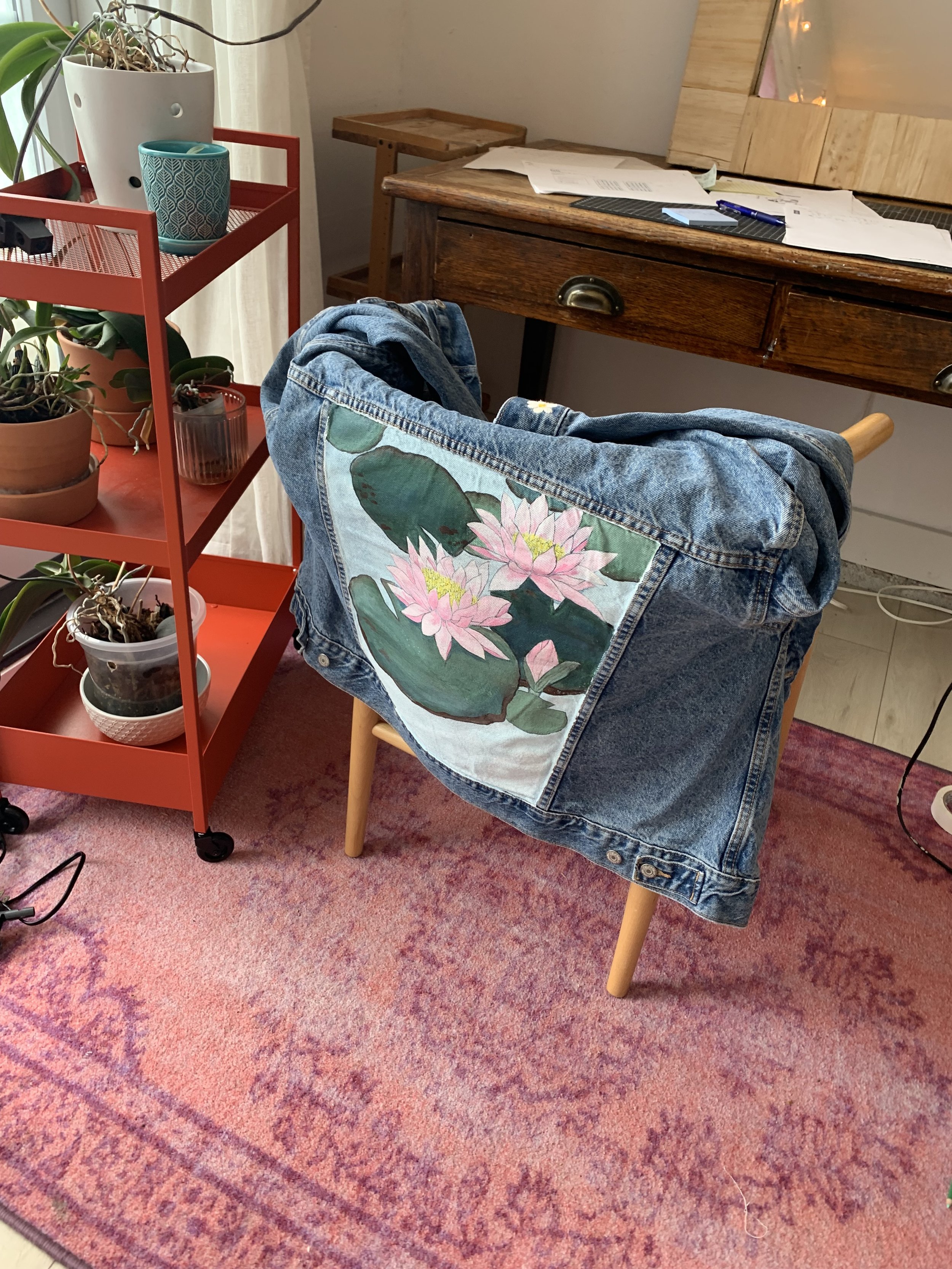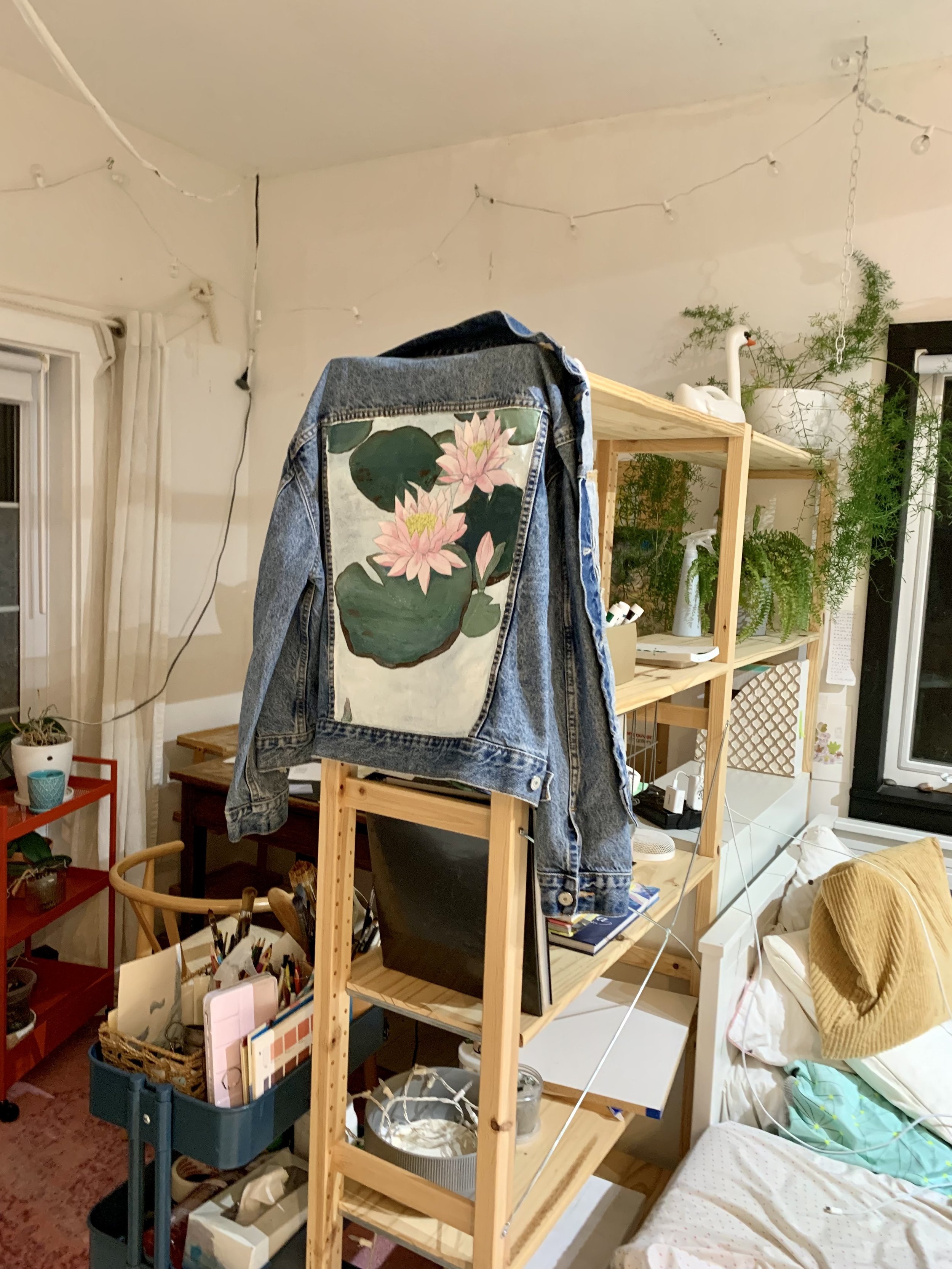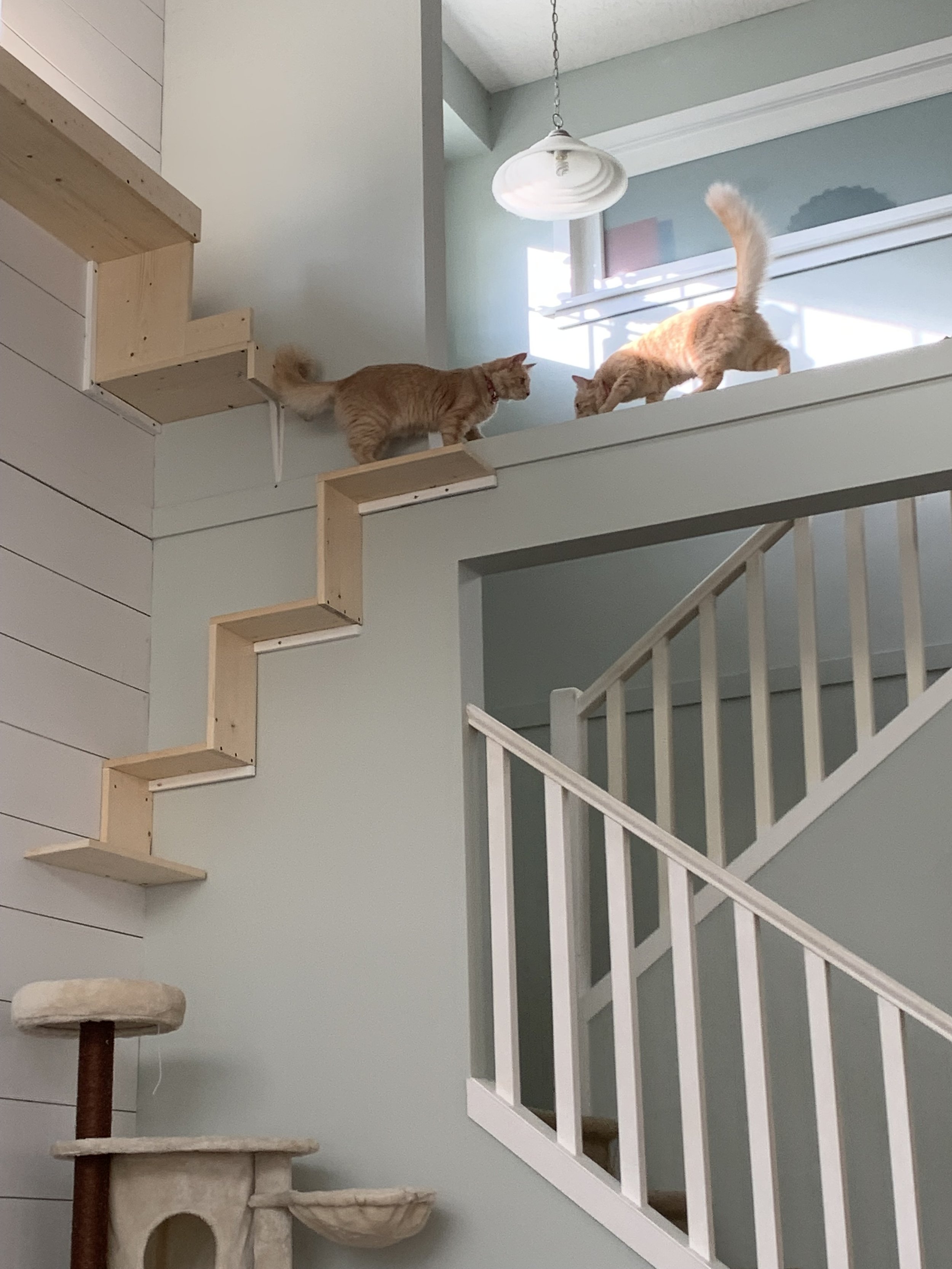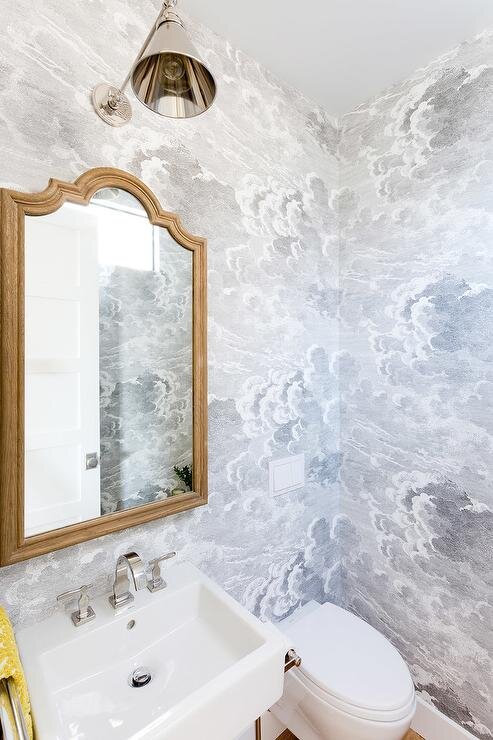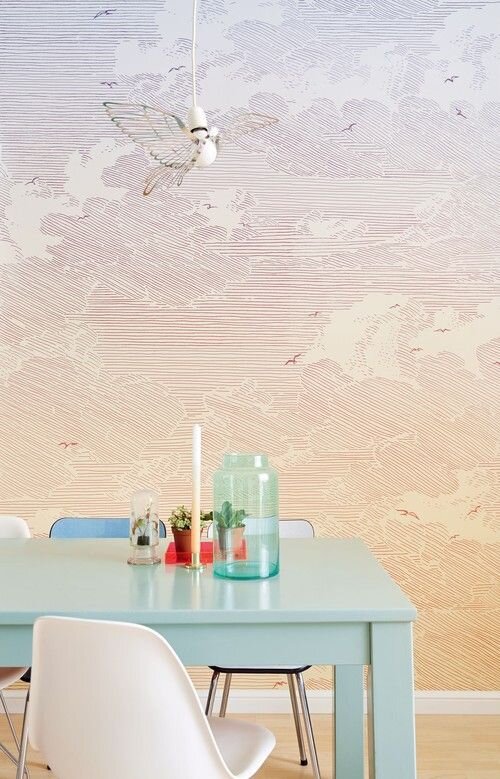I’m going to be honest, I’ve been slow to jump back on the denim / jean jacket bandwagon. Is it possibly because a gang of highschoolers made fun of my jean jacket ten years ago (Jess! Shhh!!) but denim jackets are back and I couldn’t help but be won over when I saw the idea that you could paint beautiful things on jean jackets. I know that it’s been POSSIBLE since before the bedazzled was a thing, but I’d never seen something that made me ITCH to do it until this year.
So I thought I’d take on something completely different and give it a shot.
I’m not making you wait — here’s the end result!
My base jean jacket was found on sale at the Gap for $20. Remember, this is an experiment and if it was expensive I never would have built up the nerve to paint on it.
Why this one? I liked that it had blossoms embroidered in the sleeves. It had a happy face on it that I didn’t really love and, once it arrived, I hate that the smiley goes through each side thereby rendering the pocket useless.
What have a learned? That there are tips and rules, and for every rule there’s a person out there who says that rule doesn’t matter, so take everything on here with a grain of salt.
TIPS:
Make sure your jean jacket is solid and not the stretchy kind
Paint layers thinly and allow them to dry. I used the same kind of acrylic paint that I use for making canvas paintings.
If you’re paranoid like me / want to help make sure it doesn’t crack or look like crap, maybe it’s a good idea to get clothing medium (Golden GAC 900) to mix into your paint to help it bend. I used about 1 part medium to 2 parts paint. I am a heathen who likes to add water to paint generally, but absolutely try to only add minimal water to your paint! In lieu of excessive water, the medium helped a lot.
Heat set your jean jacket after it’s all done. I tried to do this with an iron — I think (?) successfully? Full disclosure, I have not tried to wash my denim jacket yet, as I generally try to wash denim as little as possible unless you fall in mud or something. Other people use their clothing dryer to set by running it for 30 mins.
How did it turn out?
Well this jean jacket survived a month in Australia with me wearing it once in a while and tolerated me bending it to try to cram it into a carry-on suitcase several times. It has not cracked!!


